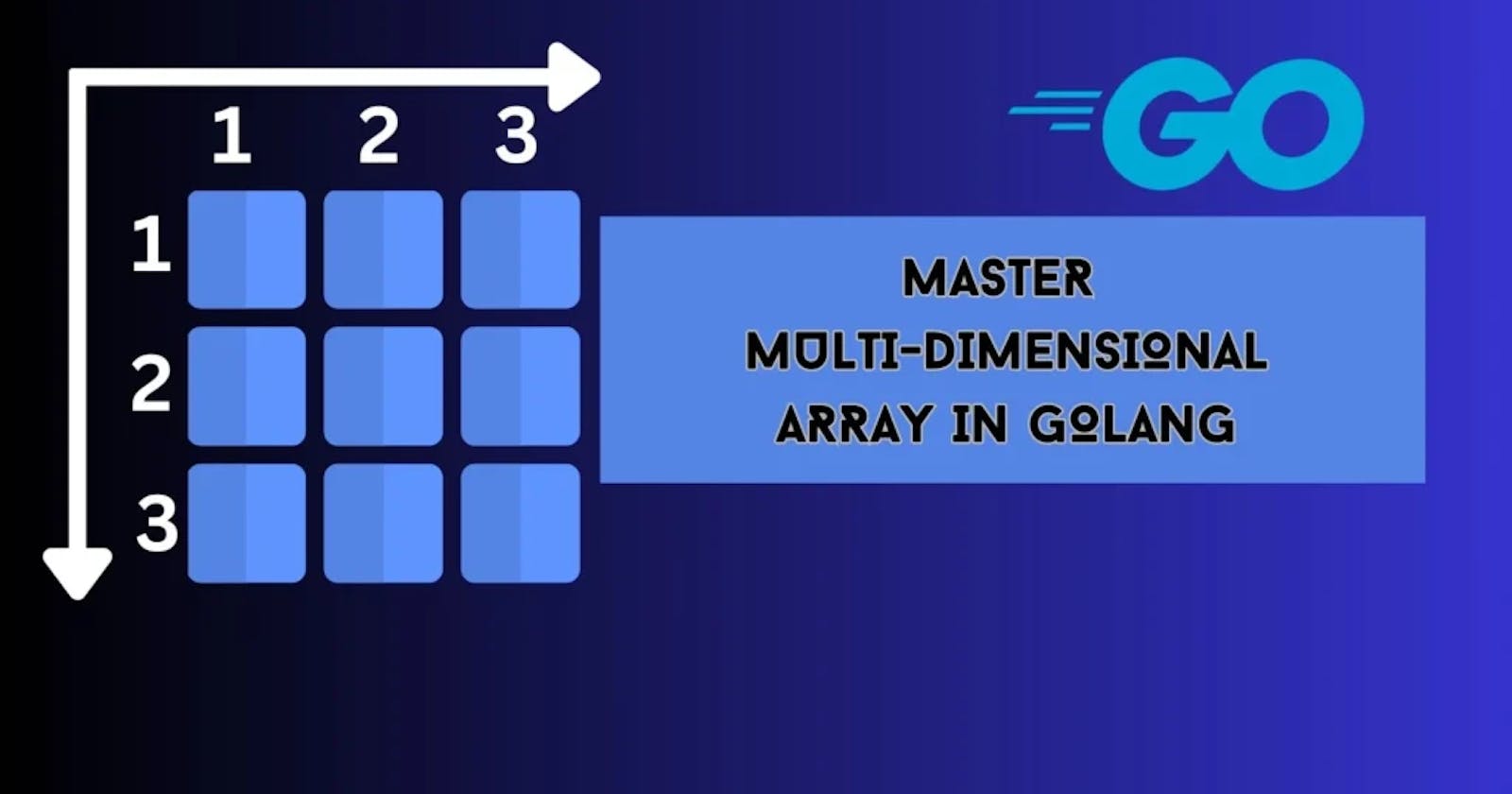Multi-Dimensional Arrays in Golang: A Complete Guide
Full guide on multi dimensional array in Golang
Go (or Golang) is a statically typed, Compiled Programming Language designed by Google to offer efficient and reliable software development. One of the most crucial aspects of any programming language is its ability to manipulate and store data.
Multi-dimensional arrays, Also known as arrays of arrays, are a widely used data structure in programming. In this guide, We will delve into the use of multi-dimensional arrays in Golang, Providing a comprehensive overview of how to create, manipulate, and iterate through them.
Understanding Arrays in Golang
In Golang, An array is a fixed-length sequence of elements with the same data type. Arrays are value types, Which means that assigning an array to another variable copies the data, not the reference. The following code snippet demonstrates how to declare and initialize a simple one-dimensional array in Golang:
package main
import "fmt"
func main() {
var myArray [5]int
myArray[0] = 1
myArray[1] = 2
myArray[2] = 3
myArray[3] = 4
myArray[4] = 5
fmt.Println(myArray)
}
Output:
[1 2 3 4 5]
Creating Multi-Dimensional Arrays
Multi-dimensional arrays in Golang are arrays with arrays as their elements. To create a multi-dimensional array, You specify the dimensions within the square brackets while declaring the array variable. Here’s an example of a 3×3 two-dimensional array in Golang:
package main
import "fmt"
func main() {
var matrix [3][3]int
fmt.Println(matrix)
}
Output:
[[0 0 0] [0 0 0] [0 0 0]]
We can also create and initialize a multi-dimensional array in Golang:
package main
import "fmt"
func main() {
matrix := [3][3]int{
{1, 2, 3},
{4, 5, 6},
{7, 8, 9},
}
fmt.Println(matrix)
}
Output:
[[1 2 3] [4 5 6] [7 8 9]]
Accessing Elements in Multi-Dimensional Arrays
Accessing elements in a multi-dimensional array is similar to accessing elements in a one-dimensional array. You simply need to use the array variable followed by the index of each dimension inside square brackets. Here’s an example:
package main
import "fmt"
func main() {
matrix := [3][3]int{
{1, 2, 3},
{4, 5, 6},
{7, 8, 9},
}
// Accessing the element in the second row and third column
element := matrix[1][2]
fmt.Println(element)
}
Output:
6
Manipulating Multi-Dimensional Arrays
Modifying the elements of a multi-dimensional array is as simple as assigning a new value to the element at a specified index, Here’s an example:
package main
import "fmt"
func main() {
matrix := [3][3]int{
{1, 2, 3},
{4, 5, 6},
{7, 8, 9},
}
// Changing the value of the element in the second row and third column
matrix[1][2] = 42
fmt.Println(matrix)
}
Output:
[[1 2 3] [4 5 42] [7 8 9]]
Iterating Through Multi-Dimensional Arrays
To iterate through a multi-dimensional array, We can use nested loops. The outer loop iterates through the rows, While the inner loop iterates through the columns. Here’s an example:
package main
import "fmt"
func main() {
matrix := [3][3]int{
{1, 2, 3},
{4, 5, 6},
{7, 8, 9},
}
for i, row := range matrix {
for j, element := range row {
fmt.Printf("matrix[%d][%d] = %d\n", i, j, element)
}
}
}
Output:
matrix[0][0] = 1
matrix[0][1] = 2
matrix[0][2] = 3
matrix[1][0] = 4
matrix[1][1] = 5
matrix[1][2] = 6
matrix[2][0] = 7
matrix[2][1] = 8
matrix[2][2] = 9
Practical Use Cases
Multi-dimensional arrays have various practical applications in computer programming, Some common use cases include:
Representing matrices in mathematical computations.
Creating and manipulating images as a grid of pixels.
Storing data in tables with rows and columns, such as spreadsheets or databases.
Implementing game boards for tic-tac-toe, chess, or other grid-based games.
Conclusion
In this complete guide to multi-dimensional arrays in Golang, we covered how to create, access, manipulate, and iterate through these data structures, With a solid understanding of multi-dimensional arrays, You can efficiently handle various tasks in Golang, Especially those requiring the representation and manipulation of complex data structures.
Although multi-dimensional arrays are a powerful tool, Golang also offers more flexible data structures like slices and maps, Which can be more suitable for certain use cases. As you continue to explore Golang, be sure to familiarize yourself with these alternative data structures as well, so you can choose the most appropriate tool for your programming tasks.
The post Multi-Dimensional Arrays in Golang: A Complete Guide appeared first on Programming Geeks Club.
Follow me for more programming content like this.
If you’re interested in learning more about programming and related topics, we invite you to check out our website programmingeeksclub.com. We offer valuable resources and insights.
You can find us on Twitter and Facebook.
Download my ebooks Download, reviews and recommendations are appreciated.
